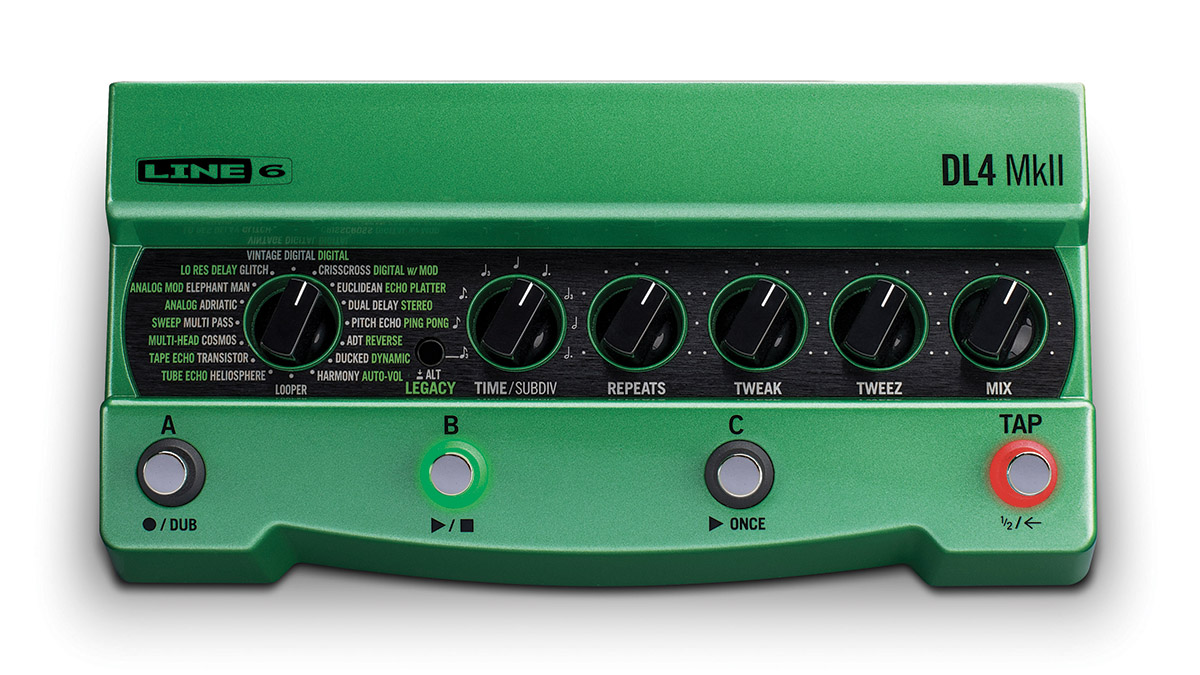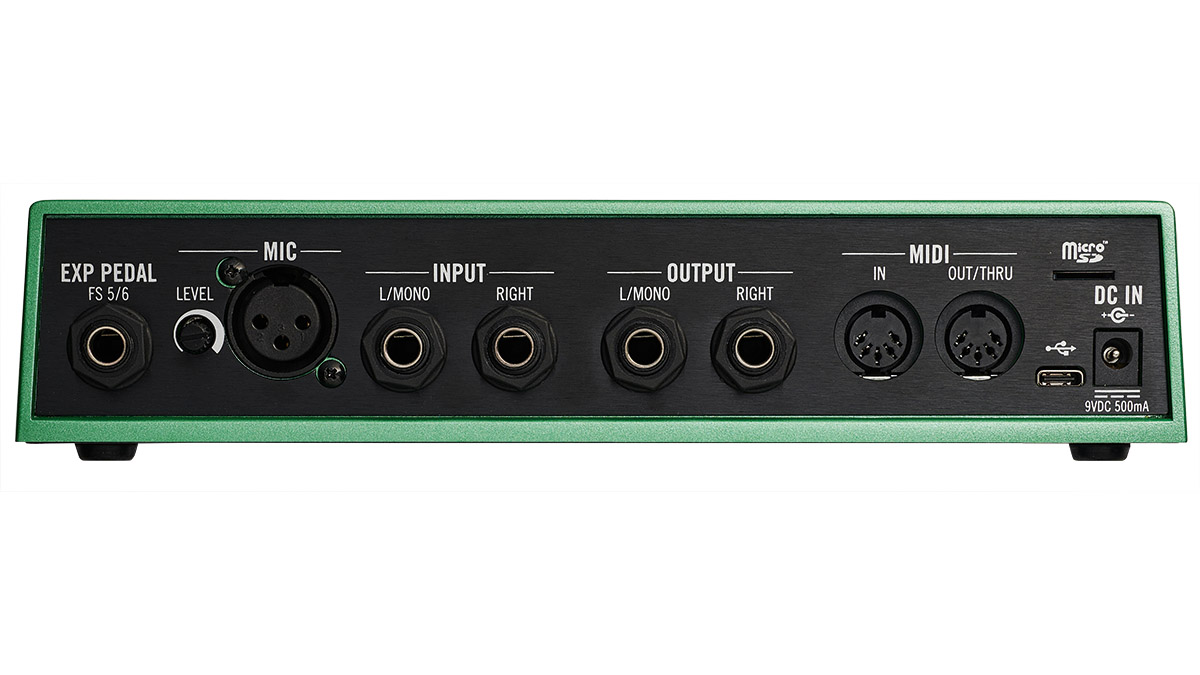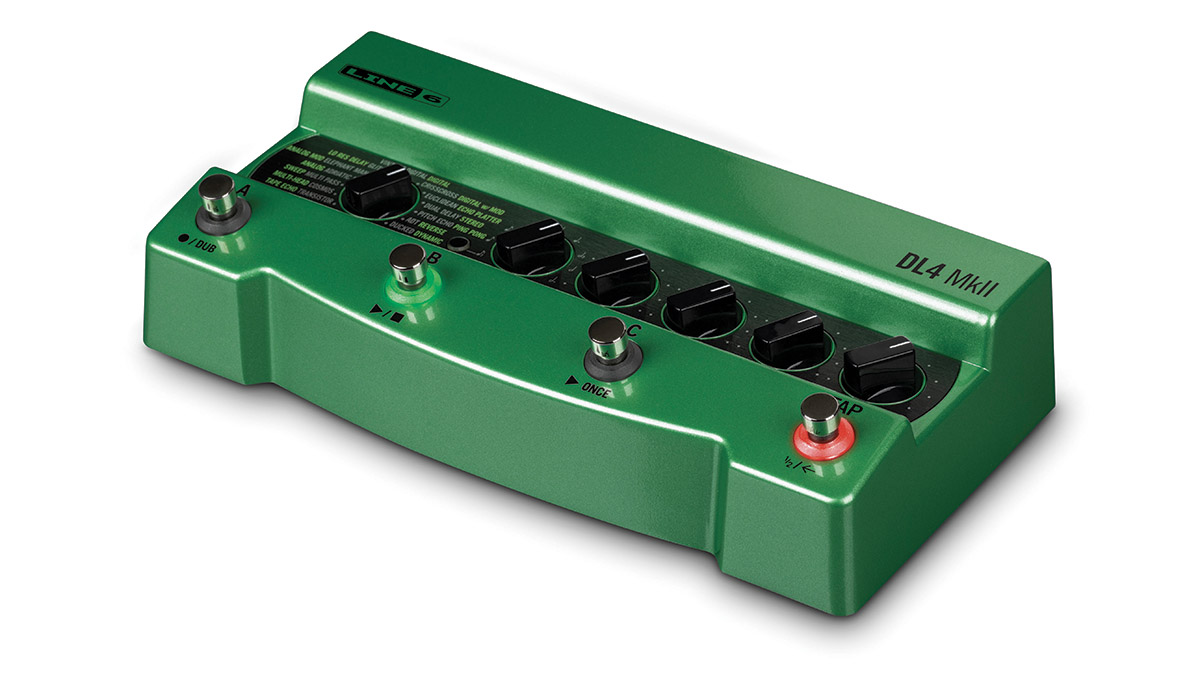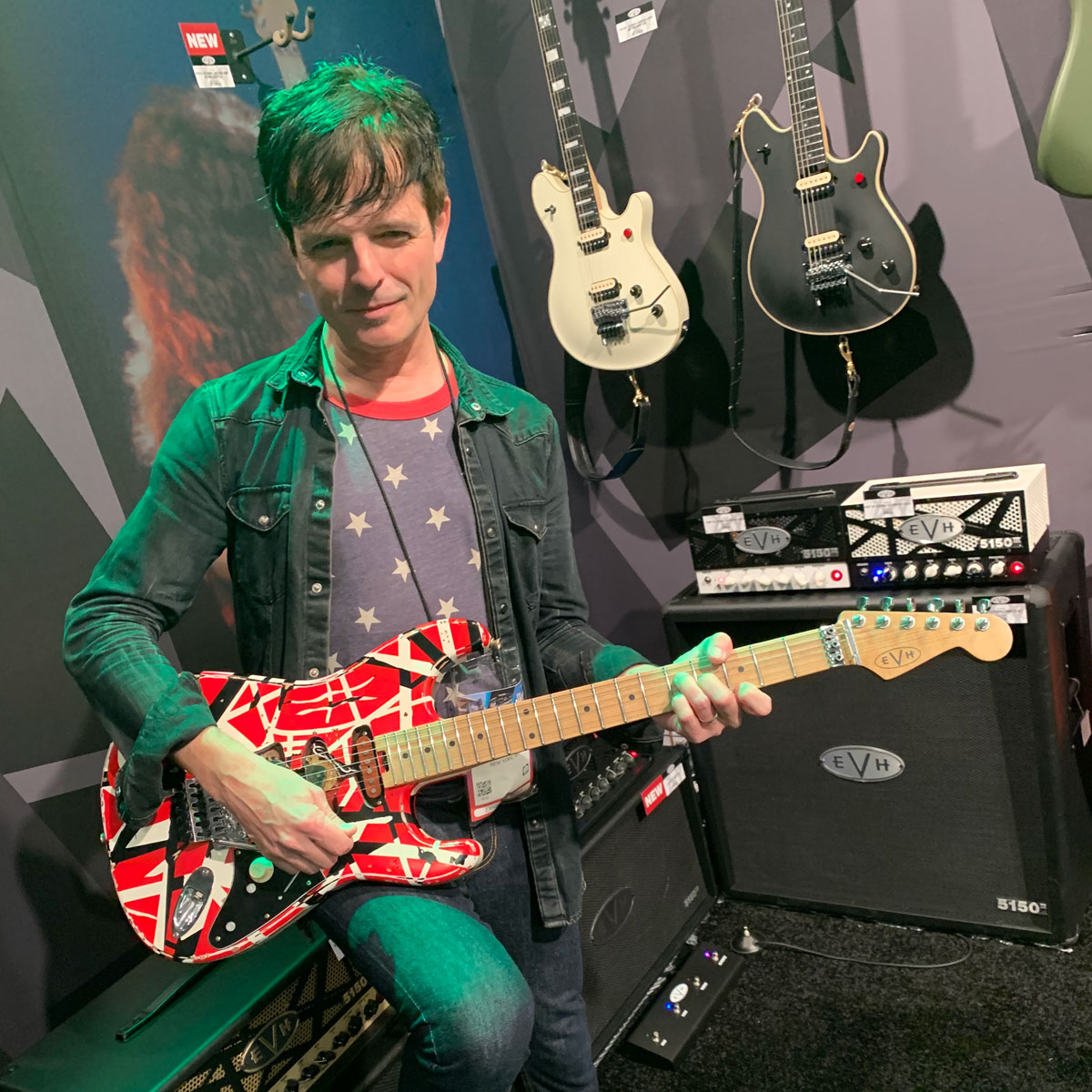Guitar World Verdict
The Line 6 DL4 MkII goes well beyond its predecessor with expanded looping time, a condensed footprint, outstanding new and former delay models, and new reverbs delivered with pristine fidelity.
Pros
- +
Outstanding sounds, including top-quality reverb.
- +
Redesigned chassis is more compact.
- +
Expanded looping capability.
- +
Easy to use.
Cons
- -
Nothing.
You can trust Guitar World
As far as delay pedals go, there was nothing else quite like the comprehensive DL4 upon its introduction in 2000 – if you haven't done so already, you should check out Chris Gill’s excellent and concise history of Line 6’s groundbreaking DL4 Delay Modeler.
With 15 superb-sounding digital models of the most legendary delays and echoes, its ability to store and access up to three presets on the fly, 24-bit true stereo signal path, built-in tap tempo and onboard 14-second looper, it’s no surprise the “Big Green Monster” emerged as a benchmark in multipurpose delay pedals and became just as ubiquitous on players’ pedalboards as another green “Screamer” stompbox known for its overdriven quality.

But the story doesn’t end there. In Gill’s article, Guitar World also had the privilege to get a first look at the new DL4 MkII prior to its launch, which in turn, set online gear forums ablaze with unbridled excitement that Line 6 was about to offer an updated version of their acclaimed stompbox.
Well, there’s no need for speculation anymore; the feature-rich Line 6 MkII Delay and looper pedal is here, and it’s about as fantastic as you imagined it to be.
Features
The DL4 MkII comes jam-packed with 15 new MkII delay models, 15 original delays (now rebranded as Legacy Delays, with “Rhythmic Delay” replaced by Echo Platter – a Binson Echorec model) and 15 “secret” reverb models, as well as an expanded internal memory that allows the looper to record 120 seconds in mono or 60 seconds in stereo at full speed (half-speed doubles the recording time).
The original’s bulkiness is swapped for a noticeably smaller green chassis that’s been streamlined to accommodate the same six knobs and four footswitches (with LED status rings), with a new backlit LED Alt/Legacy button providing access to three banks of effects (MkII Delays, Legacy Delays and Secret Reverbs), and the Delay Time knob now allowing users to select note subdivision values when the Alt/Legacy button is held down.

The new MkII delays are from Line 6’s HX family, with models like Ducked (TC Electronic 2290 ducking delay), Transistor (Maestro EP-3 Echoplex model with enhanced tape saturation), Cosmos (Roland RE-201 Space Echo) and Adriatic (modded Boss DM-2 model with increased delay time).
All the latest guitar news, interviews, lessons, reviews, deals and more, direct to your inbox!
The secret reverbs are engaged by holding down the Alt/Legacy button and turning the rotary model selector knob to choose one to inject into any delay model and using the remaining knobs to adjust mix, decay time, parameters and even reverb-delay routing.
These original reverbs are all culled from Line 6’s popular HX effects and cover all the classic room, spring, hall and plate ‘verbs along with some spacious studio-quality ones. The 4-switch looper is still activated in the six o’clock position from the model selector knob regardless of which bank is selected.

The rear panel reveals the increased capabilities of the DL4 MkII, with the inclusions of an XLR Mic input with level control (for processing and looping vocals), EXP FS 5/6 jack (for an expression pedal and a footswitch or two external footswitches via a Y-cable), MIDI In and Out/Thru jacks and USB C jack (for MIDI control, computer connectivity and firmware updating).
Once you pinpoint your desired delay model and sculpt it, making it a preset is still as easy as holding the footswitch down to save it
There’s also a microSD card slot (card not included) for expanding the Looper’s recording time and saving a recorded loop even when the MkII is off.
The MkII can be set up for true analog bypass, buffered bypass, DSP bypass (for natural decaying reverb/delay trails) and dry kill.
If you don’t use the Tap function, you can reconfigure the Tap switch to access a second bank (D, E & F) allowing you to save up to six presets, or save 125 additional presets via MIDI. What’s more, the Tap switch can also be configured as a 1-switch looper without having to select Looper from the rotary model knob.
Performance
Major kudos goes to Line 6 for preserving the core of the DL4’s intuitiveness and widespread appeal in the MkII – whereby the simple joy of rotating knobs and hitting footswitches unleashes a multitude of delay textures without the fiddly nuisance of LED screens or display menus.
I’ll concede the included printed Cheat Sheet is helpful in knowing what the Tweak and Tweez knobs do to each model’s parameters, but I trust your ears will easily discern the effected nuances.
Once you pinpoint your desired delay model and sculpt it, making it a preset is still as easy as holding the footswitch down to save it. The MkII also allows for a deeper dive in its customization using its global settings, but the pedal’s ease of use will rarely have you consulting the manual.
The reverbs are a welcome addition to the MkII and can be used independently as long as you set the delay mix to 0%
The MkII borrows from the same HX Modeling sound quality found in Line 6’s Helix processors, so if you’re one of the Helix cognoscenti, you’ll be right at home using the many familiar delay models in the MkII.
As much as I’ve grown fond of the legacy models, I found myself digging on the current batch of MkII models like the Vintage Digital, Elephant Man (EHX Deluxe Memory Man model) and ADT (Auto-Double Tracker) for most of my delay colors.
The newer echo models like Cosmos, Transistor and Adriatic are detailed and lush, but it comes down to which of those threadbare tape sounds you’re willing to settle down with (personally, the Cosmos is my current favorite for its modulated and self-oscillating realism).
There are, of course, more complex delays like Euclidean and Glitch, but I’ll leave those for the mathematically inclined. The reverbs are a welcome addition to the MkII – whether as a special effect or for lush ambience – and can be used independently as long as you set the delay mix to 0%.
The looper works as expected, and the longer loop time ably turns the MkII into a compositional tool for heady looping adventures. There are many more layers to be found in the MkII, but I’ll leave you with its smaller overall footprint and standout modeling make it a serious contender to replace your current fave delay(s) on your pedalboard.
Specs
- PRICE: $299 / £249
- TYPE: Delay modeler pedal
- FEATURES: 30 Delays (15 MkII plus, 15 Legacy DL4), 2 loopers (240 seconds, hours with SD card), 128 MIDI-accessible presets, switchable true, buffered, or DSP bypass
- CONNECTIONS: Expression pedal, XLR dynamic mic input for vocals, stereo I/O, MIDI
- CONTACT: Line 6
Paul Riario has been the tech/gear editor and online video presence for Guitar World for over 25 years. Paul is one of the few gear editors who has actually played and owned nearly all the original gear that most guitarists wax poetically about, and has survived this long by knowing every useless musical tidbit of classic rock, new wave, hair metal, grunge, and alternative genres. When Paul is not riding his road bike at any given moment, he remains a working musician, playing in two bands called SuperTrans Am and Radio Nashville.


